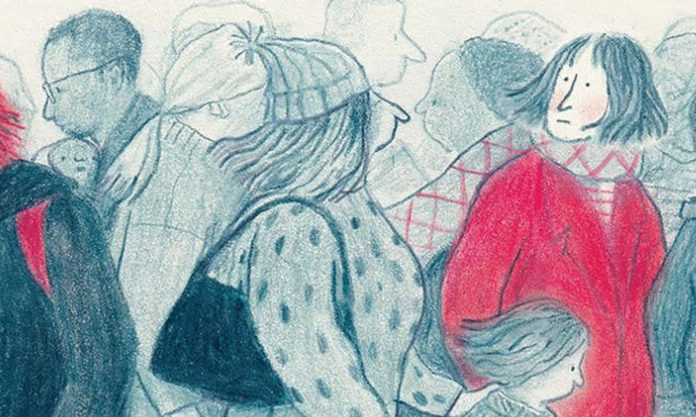If a picture says 1,000 words, then a 100 great images can tell a novel, right? In an article for Writer’s Digest, writer and illustrator Sophie Burrows says she did exactly this in her new graphic novel, Crushing.
“Apart from a few lines of dialogue and some background elements, the book is wordless,” Burrows says. “Using a graphic novel format, it felt perfect to explore the theme of loneliness using as few words as possible.” Burrows shares what she learned creating a novel where illustrations carry the bulk of the story.
- Begin with drawing. “It may come as no surprise that a book without words did not begin with writing,” Burrows says. “I found myself drawn to crowded places; I did a lot of sketching at museums, and then moved to busy streets and stations.” While drawing places and crowd scenes, Burrows began to ask questions about the people she saw and their stories. “You can really experience a place through drawing it, in different lights, in different weathers, and in the right conditions, narratives can begin to form,” she adds.
- Find something to say. Knowing what you want to say can help you create your story and identify the images you will use to convey it. “I find it helpful to keep my story’s themes close by when I’m making drawings or writing,” Burrows writes. “They often grow or change throughout a project, but I like to check in with myself regularly: What is this part of the story about? Is that clear through my images?”
- Consider the little details. “Narrative details can be key in a narrative without words,” Burrows explains. “Background elements in your drawing can serve as clues to the plot, or the character.” In many cases, a wordless story can convey information that would seem overdone in prose.
- Use the tools of the form. In prose, you control pace with description, action, dialogue, and narrative. In a graphic novel, the number, size, and shape of panels convey time and movement. “I think that this is one of the moments where you might feel closer to a filmmaker than a writer, and it can be incredibly helpful to watch movies to find inspiration to guide the pacing for your stories,” Burrows says.
- Express emotion. Because you can’t rely on narrative or dialogue, you must have a deep understanding of your characters’ emotions before you can portray them through illustration. “It’s important to me that my drawings of characters show their feelings through their facial expressions, and body language,” Burrows says. Art style and color choice are factors as well. “Color is incredibly symbolic: Blue evokes feelings of calm, green suggests jealousy,” Burrows explains. “The way materials are applied can also help communicate a feeling—heavy handed, scratchy marks will communicate different emotions to a soft, lighter touch.”












